Turnkey gas holder: how to install a gas tank and install equipment
Turnkey projects involve fully completed construction, production or installation of facilities that can be used immediately. Private property owners often choose this method of installing new gas equipment.
It is much easier to order a turnkey gas holder in one organization than to conclude agreements with several companies. In any case, installation is carried out strictly in accordance with the requirements and standards.
In this material we will understand the stages of turnkey installation of a gas tank.
The content of the article:
The benefits of a turnkey project
Owners of private housing, wanting to save money, sometimes try to perform some of the work on their own. And it is advisable if there is experience in the installation or connection and there are no legal barriers.
However, just in the case of organizing an independent gas supply for self-intervention, “loopholes” practically remain:
- all installation, equipping with additional equipment, connection, commissioning must be carried out by an organization that has a special license;
- TU development and project design are also carried out by authorized companies;
- Before concluding an agreement with the installers, the owner collects a package of documents (technical specifications for gasification of the house, title documents for the land, the plan of the site, coordination with many authorities, etc.), which takes a lot of time.
If the owner of the house first encounters the design and installation of an autonomous gas system and at the same time is a busy person, it is better to immediately contact a private company that has been successfully installing turnkey gas tanks and servicing gas systems for a long time.

Representatives of a private company, as a rule, have the necessary connections in various related instances, so the process of approval of documentation will be much faster.
The advantages of the “complete package” also include the operational installation of the gas tank, including earthwork, transportation and installation, connection and pressure testing.
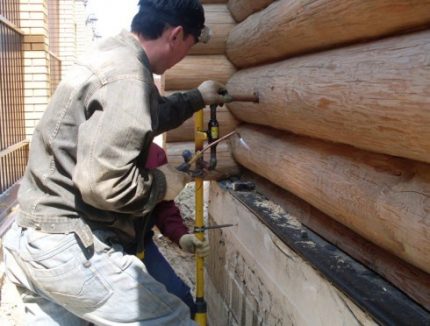
If errors occur during installation, they are corrected free of charge. The conclusion of a service agreement (prevention, gas injection) with the company installing the gas tank facilitates the repair or replacement of equipment. And more about the cost of installing a gas tank in a private house can be found in this stuff.
Installation requirements for gas tank
An autonomous gas storage facility, like a gas pipeline, is a high-risk construction, therefore, a number of requirements are imposed on the installation and connection of gas equipment.
They are set out in regulatory documents: for example, in PB 03-576-03 you can find out about the installation conditions of vessels under pressure, and in SP 62.13330.201 - On the general provisions for the construction of gas distribution systems.
Similar requirements apply to the gas pipeline through which fuel flows from the tank into the building:
- the depth of the trenches for polyethylene (steel is used extremely rarely) pipes - at least 1.7 m;
- mandatory installation of a condensate collector;
- the slope of the pipe to the condensate collector is 1 cm per 1 m;
- pipes are connected in one piece;
- distance to parallel pipelines - at least 1 m.
When backfilling trenches, the gas pipeline laying zone is marked with a wide signal tape, which is stretched along the entire length of the pipe and sprinkled with soil.
Contract options with the contractor
If the owner of the house is interested in installing a turnkey gas tank, then he will have to choose from several different nuances of the options. To expand the circle of customers, companies offer 3-4 solutions. Usually they are called "Economy", "Standard", "Optima", "Premium", "Suite" and similar names.

The choice is good in that you can choose the optimal package, saving on the same earthwork or signing a gas supply agreement with another organization.
The main steps for installing a turnkey gas tank
Turnkey installation involves the execution of all stages of autonomous gasification by the company with which the contract is concluded. However, some control by the owners of the house over the activities of the installers will not hurt.
Designing and selecting a tank
Design documentation is executed only after the specialist visits the facility. The choice of gas tank and the nuances of installation depend on the size of the site, the location of the house and highways, the composition of the underlying rocks, the level of groundwater.
On site, it is decided which tank volume is optimal. This parameter is tied to the area of the house, so even professionals often use correspondence tables.
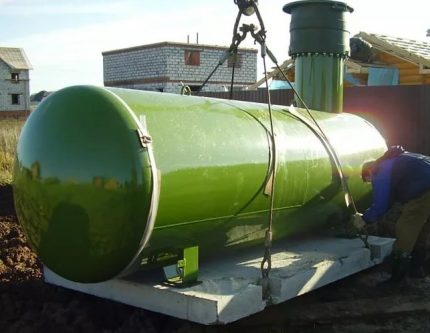
Having experience in installation works, representatives of the contractor can advise on the choice of a gas equipment manufacturer. However, in practice, they, as a rule, are distributors of one or several companies for the production of gas holders, therefore, they will recommend their products.
It is logical to assume that it is unprofitable for them to offer low-quality tanks, because they are fully responsible for the safety of the facility.
Read more about varieties of gas holders Further.
Options of gas holders for cottages:
After inspecting the territory and selecting a complete set, a detailed action plan is drawn up and an estimate is compiled taking into account what exactly is included in the “turnkey” concept.
If any work must be paid extra, this is agreed upon before starting work. Design documentation is provided along with documents from the customer to obtain permission to install an autonomous gas system.
Preparation of foundation pit and trench
Some companies offering autonomous gasification services for village houses and country cottages do not include land works in turnkey comprehensive services or include, but only in “Lux” type packages, that is, the most expensive ones.
Consequently, at the stage of digging a pit and trench, you can save 15-20 thousand rubles. and do the land work yourself.
What needs to be done for this:
Backfill is carried out after installation of the gas tank and valves, connection and testing. For backfill, river sand is used, and only for the top layer (20% of the total backfill) native soil is allowed to be used.
Installation of a gas tank in a pit
Gas tanker transportation is carried out by special equipment. Mini-tanks can also be delivered by own transport, but for cottages, as a rule, they use large tanks from 2000 l. If there is an entrance to the pit, then the best option is a truck with a manipulator.
Installation is carried out by an organization licensed to work with gas equipment. It is strictly forbidden to independently install a gas tank, connect a gas pipeline and other equipment to it.
Organization of basement entry into the house
Low-pressure gas is introduced into the building using a special technology called “basement entry”. At its core, this is the transition of a polyethylene pipe that goes from the gas tank to the steel one that goes inside the house.
For input installation, the shortest path is usually chosen. During installation, make sure that the gas pipes do not intersect with other utilities.
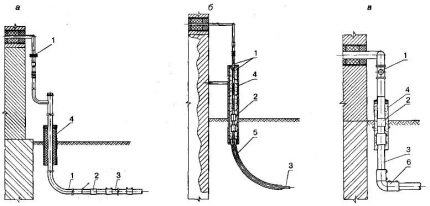
Base taps are produced in a factory way according to SNiP 42-103-2003. Part sizes may vary depending on installation conditions.
Two types of basement must not be confused - for liquefied and moist or dried gas. If used improperly, the fuel supply may be interrupted during frosts.
We also recommend that you read the article on how far to install the gas tank. More details - go to the link.
Gas equipment connection
After installing the tank on the stove, the devices are installed, without which the gas supply cannot be made:
- electrochemical corrosion protection (anode-cathode);
- bellows expansion joint to ensure linear expansion and contraction during the period of soil movements;
- condensate collector to prevent ice plugs during frosty weather (mounted at the lowest point of the gas pipeline);
- ground loop and lightning protection system.
On the throat panel that protrudes above the ground, all valves and gates must be in good condition. This applies to the safety and refueling valve, pressure gauge with tap, adjusting gear, percentage valves, etc.
From the reservoir to the basement, a gas pipeline is constructed from HDPE. Low-pressure polyethylene was chosen as a material for pipes for good reason: it is durable, flexible, does not enter into a chemical reaction with fuel, easily tolerates soil pressure, and has a long service life.
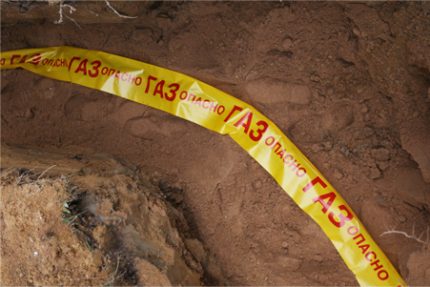
Unlike the external gas pipeline, the internal one is assembled from steel pipes. They are interconnected by detachable connections and left open to be able to repair or connect additional equipment.
When installing a turnkey gas tank, the internal connection of stoves or boilers is most often not taken into account, except in the most expensive service package. This question is negotiated separately.
Commissioning and backfilling
Commissioning is carried out before backfilling in order to correct possible errors, tighten connections, and provide additional protection for the gas pipeline at the joints.
First, they pressurize and purge the tank and pipes using pneumatic equipment under a pressure of 50 kg / h, after which leakage is monitored. If everything is normal, the tank is filled with gas and all connections are checked once again in order to detect leakage.
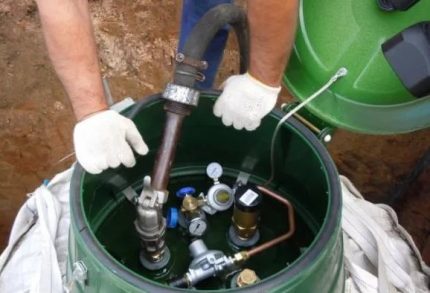
All data are recorded in the commissioning log, mounted gas sensors (optional), thermal shut-off valve. And only after the completion of commissioning is completed do they fill the tank with sand.
If the connection package includes the installation of internal equipment, you can immediately check the operation of the gas boiler, stove, fireplace, etc. For installation work, as well as for all devices, a guarantee is given.
Gas supply service agreement
After-sales service and refueling of the autonomous gas station are mandatory points, therefore, a contract for further servicing is concluded either with the organization that installed the gas tank or with another company (for example, which is closer or offers lower prices for refueling).
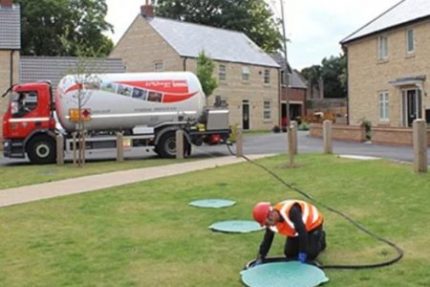
Payment for gas is made in cash at the time of service (according to the meter installed on the gas carrier) or by bank transfer.
System maintenance is divided into scheduled, unscheduled (repair) and emergency (emergency). The planned includes an inspection of the equipment, checking the operation of all devices, determining the gas pressure, and, if necessary, tuning.
According to the schedule, the safety valve is replaced. The tank is checked for integrity at intervals of 4-5 years.
If there are doubts whether it is worth installing a gas tank on a site, we suggest reading an article where we compared the installation of a gas tank and main gas. Read more here.
Conclusions and useful video on the topic
You can find out how gas tanks look and work, how they are installed and refilled from the following videos shot by professional installers.
About the nuances of using liquefied gas and autonomous gasification:
It is intelligible about installation and fittings:
Example of incorrect installation of a gas tank:
The use of gas in domestic conditions makes life in the country comfortable, but subject to absolute safety. A professional installation of equipment by a company that has a license and extensive experience is the only option for the correct and legal connection of a gas tank. Turnkey installation in this case looks practical and expedient.
If you have experience installing a turnkey gas tank, share it with our readers. Leave comments in the block under the article. There you can ask questions of interest on the topic of the article.

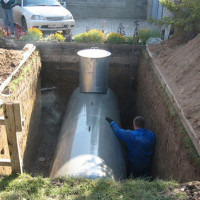 Installation and installation of a gas tank for a private house: the procedure for design and installation work
Installation and installation of a gas tank for a private house: the procedure for design and installation work 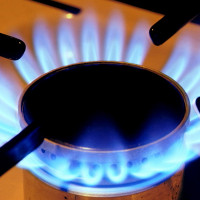 How is gas connected to a private house: input device + system installation
How is gas connected to a private house: input device + system installation 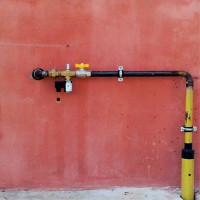 Laying a gas pipeline in a case through a wall: the specifics of a device for introducing a pipe for gas into a house
Laying a gas pipeline in a case through a wall: the specifics of a device for introducing a pipe for gas into a house 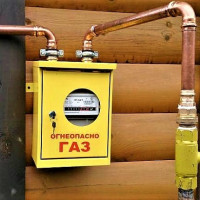 Copper pipes for gas: specifics and norms for laying a copper pipeline
Copper pipes for gas: specifics and norms for laying a copper pipeline 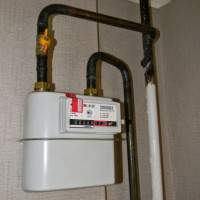 Installation of a gas meter in the apartment: step-by-step installation instructions
Installation of a gas meter in the apartment: step-by-step installation instructions 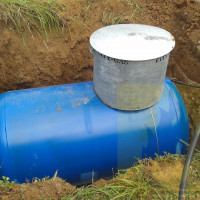 Autonomous gasification of a private house: arrangement of a gas supply system for cylinders and a gas tank
Autonomous gasification of a private house: arrangement of a gas supply system for cylinders and a gas tank  How much does it cost to connect gas to a private house: the price of organizing gas supply
How much does it cost to connect gas to a private house: the price of organizing gas supply  The best washing machines with dryer: model rating and customer tips
The best washing machines with dryer: model rating and customer tips  What is the color temperature of light and the nuances of choosing the temperature of the lamps to suit your needs
What is the color temperature of light and the nuances of choosing the temperature of the lamps to suit your needs  Replacement of a geyser in an apartment: replacement paperwork + basic norms and requirements
Replacement of a geyser in an apartment: replacement paperwork + basic norms and requirements
We want to put a gas holder in the country, but so far I can’t decide for good. And I’m interested in this question, how safe is the gas tank and most often what problems can be encountered? It is clear that only specialists should install. There are concerns, after all, the gas is under high pressure, can it not explode due to a drop or from internal pressure? Is a gas leak possible?
In the case of installation of a gas tank by specialists and subsequent proper operation, safety is not worth worrying about. Use the services of trusted companies (including during maintenance and refueling), during installation, be sure to require a certificate for the gas holder.
The gas holder must be new, do not settle for a used one, no matter how good it looks. In general, if you follow simple rules for safety, do not worry. The gas holder is much safer than the same household gas cylinder.
Not where you start, with security, they are fine. But did you look at the prices for the installation and maintenance of these gas tanks? And you need to get a bunch of permissions. A gas holder is definitely not an option for a summer residence.